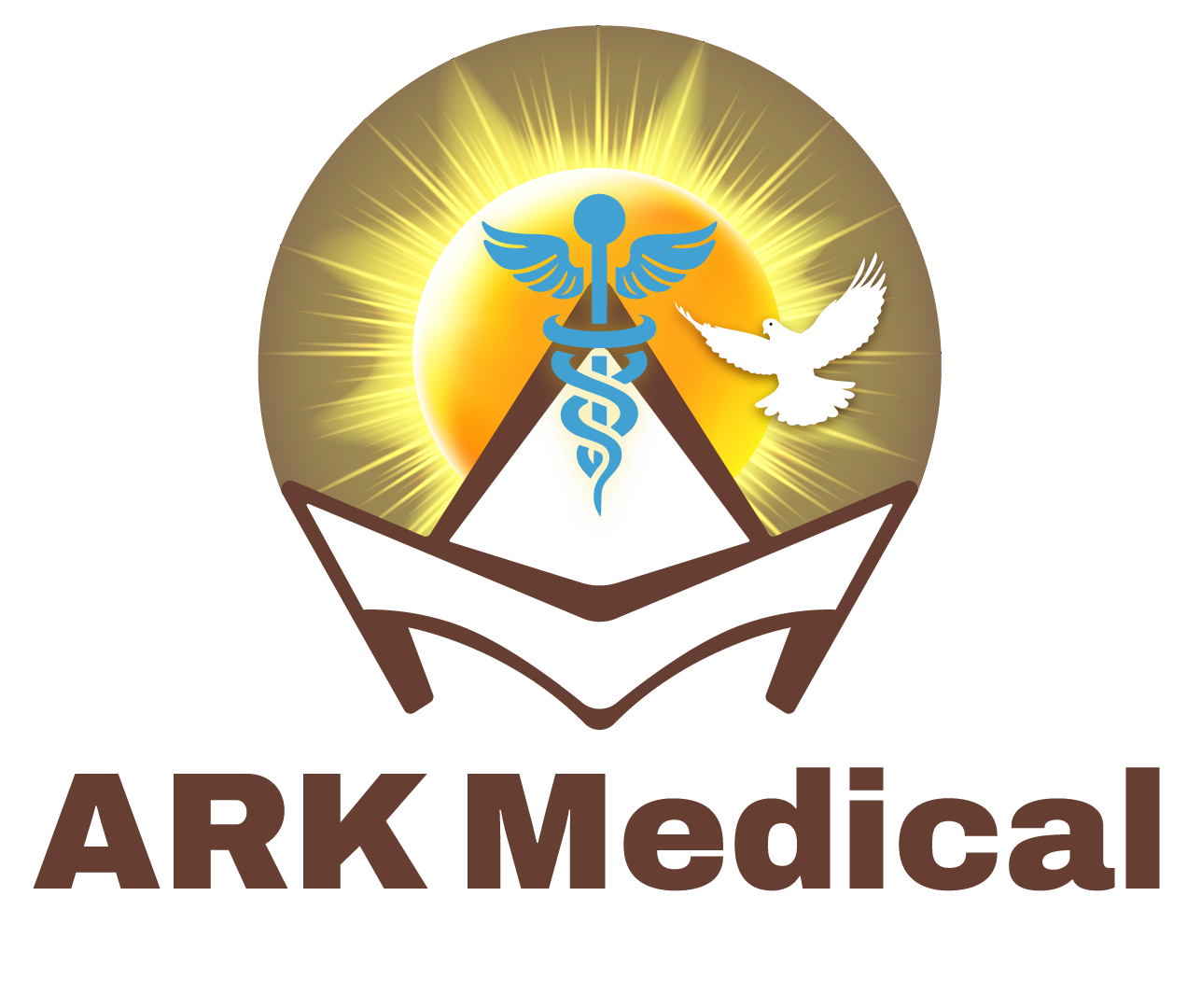Physical exams have long been considered a crucial component of comprehensive healthcare. Even with quick improvements in medical technology, like AI, advanced imaging, and telehealth platforms, the physical exam is still an important tool for doctors all over the world.
Think about a common clinical situation: a patient comes in with vague symptoms like constant tiredness and headaches that keep coming back. During a routine physical exam, the healthcare provider finds that the patient’s blood pressure is too high. If this condition remains untreated, it can lead to severe heart issues and worsen mental health by escalating anxiety and depression. This example shows how important physical exams are for finding problems early and keeping people healthy.
Physical exams are important for more than just basic health checks. These tests supply doctors and nurses important information about both physical and mental health problems. They know that there is a strong link between the body’s systems and mental health. Systematic evaluation through physical examinations facilitates the early detection of health issues, promotes the integration of mental and physical health management, and lays the groundwork for optimal patient outcomes.
This article looks at the lasting importance of physical exams in modern healthcare. It talks about how they have changed over time, their clinical benefits, their parts, the problems with making them available, their role in mental health care, and what the future holds for them.
The Development of Physical Examinations in Healthcare
Historical Growth
The tradition of physical examination originates from ancient civilizations. Hippocrates, who is often called the father of modern medicine, stressed how important it is to observe and touch patients to learn about how diseases work. His methodical approach to evaluating patients laid the groundwork for principles that still guide medical practice today.
Key steps in the evolution of physical examinations include:
- Ancient civilizations: Early doctors in Egypt and Babylonia came up with basic ways to assess patients based on their symptoms.
- In the classical period: Hippocrates formalized hands-on examination methods, stressing direct patient observation and physical contact.
- In 1816: René Laennec invented the stethoscope, which changed the way doctors checked the heart and lungs and greatly improved their ability to make diagnoses.
- 20th century: Physical exams became a standard part of regular healthcare, and tools like sphygmomanometers were added to measure blood pressure.
These changes show how physical examination methods have gotten better over time, going from simple observations to organized, systematic tests.
Modern Importance in the Digital Age
Some people who work in healthcare wonder if physical exams are still useful now that we have advanced diagnostic tools. However, this view is based on a basic misunderstanding. Physical exams and technological advances work together, not against each other. They supply unique clinical insights that imaging studies and lab tests can’t match.
Physical assessment techniques identify nuanced clinical findings that may be overlooked by technological screening methods, including:
- Changes in the temperature, color, or texture of the skin.
- Unusual ways of walking or moving.
- Small changes in the size or position of organs .
Non-verbal signs of pain or distress
Combining physical exams with modern healthcare technology has synergistic benefits:
- Wearable devices provide healthcare providers real-time physiological data that they can use to make sense of during in-person exams.
- AI algorithms can suggest possible diagnoses, but a physical exam is still needed to confirm them.
Telehealth consultations make it easier for patients to get in touch with their doctors for the first time. Physical exams can give a full picture when needed.
This integrated approach improves the accuracy of diagnoses while keeping the important human touch in healthcare delivery.
The main benefits of physical exams for your health
Preventive care and finding diseases early
Regular physical exams are a key part of preventive healthcare plans. These assessments enable early identification of health concerns before they progress to advanced stages, significantly improving treatment outcomes and reducing healthcare costs.
Some of the clinical benefits of regular physical exams are:
- Screening for long-term illnesses: Finding high blood pressure, diabetes, dyslipidemia, and cancers early on.
- Monitoring children’s health: checking their growth patterns, developmental milestones, and vaccination status.
- Geriatric care: Assessing cognitive function, mobility, and fall risk to detect health changes associated with aging .
Because physical and mental health are linked, it’s especially important to find problems early. Chronic conditions like diabetes that aren’t managed can lead to depression and anxiety, so a full physical exam is important for complete patient care.
Building therapeutic relationships between patients and providers
Physical examinations help patients and healthcare providers build therapeutic relationships based on trust. Because these meetings are face-to-face, they allow for meaningful communication that goes beyond just collecting clinical data.
Some important parts of building relationships during physical exams are:
- Better communication: When patients talk to each other in person, they are more likely to talk about sensitive health issues, such as mental health symptoms.
- Less stigma: Talking directly with healthcare providers can make it easier to discuss emotional or mental health issues that show up as physical symptoms.
- Patients: who perceive their concerns as acknowledged and comprehended are more inclined to adhere to treatment recommendations.
- Strong relationships: between patients and providers lead to better health outcomes, which makes the social aspects of physical exams clinically important..
Complete integration of mental and physical health
Modern healthcare is increasingly acknowledging the reciprocal relationship between mental and physical health. Physical examinations are an essential means of evaluating the mind-body connection, detecting somatic expressions of psychological distress and physical ailments that affect mental health.
Integrative assessment methods encompass:
- Identifying somatic symptoms: Identifying physical signs of anxiety, depression, or trauma, such as inexplicable pain, stomach issues, or heart problems, is crucial.
- Comprehensive care planning: Creating treatment plans that take into account nutrition, exercise, stress management, and both physical and mental health needs.
This comprehensive approach enhances general well-being, particularly crucial for healthcare facilities that prioritize integrated mental health care.
Important Parts of a Full Physical Exam
Assessment of Vital Signs
Taking vital signs provides doctors important physiological information that helps them make decisions about treatment. Standard vital sign assessment consists of:
- Blood pressure measurement
- Checking the heart rate
- Checking the body’s temperature
- Keeping an eye on the breathing rate
Vital signs frequently indicate significant correlations with mental health status. High blood pressure may be a sign of long-term stress or anxiety, and strange heart rate patterns may be a sign of panic disorders or other mental health problems that affect how the autonomic nervous system works.
Head-to-Toe Evaluation in a Systematic Way
Comprehensive physical examinations use systematic assessment methods to verify all the body’s systems. This methodical approach ensures a thorough consideration of all aspects and reduces the likelihood of overlooking crucial clinical findings.
Some important parts of a systematic physical exam are:
- Examination of the head and neck: feeling for thyroid problems, swollen lymph nodes, or lumps
- Cardiovascular and pulmonary evaluation: Auscultation for heart murmurs or atypical lung sounds that may affect oxygenation and lead to fatigue or mood disturbances.
- Examination of the abdomen: Palpation to detect organomegaly, masses, or tenderness possibly linked to gastrointestinal disorders associated with anxiety or stress.
- Musculoskeletal and integumentary assessment: Checking for injuries, unusual things, or signs of self-harm that are important for a mental health evaluation
This all-encompassing method makes it possible to detect both obvious and subtle clinical problems.
Specialized Evaluations Based on Risk
Evidence-based clinical practice necessitates the customization of physical examinations to align with the specific characteristics of each patient, encompassing age, sex, familial history, and individual risk factors.
Age-appropriate specialized assessments encompass:
Pediatric exams include checking for developmental milestones, keeping an eye on growth, and doing health screenings that are right for the child’s age.
- Adult preventive care: checking for heart disease, cancer, and metabolic health issues
- Geriatric assessment: Cognitive screening, fall risk evaluation, and functional status assessment to identify health changes that come with getting older
This individualized method maximizes the clinical efficacy of physical examinations throughout the lifespan.
Problems and Solutions for Getting Physical Exams
Things that make it difficult to get regular preventive care
Even though regular physical exams are known to be helpful, there are many things that keep people from getting routine preventive health care.
Some common problems are:
- Time constraints: Personal and work commitments make it hard to find time for healthcare appointments.
- Financial barriers: The costs of healthcare, such as copayments and deductibles, may make it hard to go to regular preventive care visits.
- Geographic limitations: Healthcare infrastructure and provider availability are often lacking in rural and underserved areas.
- Stigma surrounding mental health: People may not want to undergo full health checks because they are worried about talking about their psychological symptoms.
These barriers make health care unequal and lead to worse health outcomes.
Ways to Make Access Better
Healthcare systems and individuals can use a number of different strategies to get around problems that make it hard to get a physical exam:
- Telehealth integration: Virtual consultations can help with the first assessment and triage, and in-person exams can be scheduled when they are needed
- Insurance optimization: Knowing what your insurance covers and using preventive care can help you pay less out of pocket.
- Family-centered scheduling: Making sure that multiple family members get their checkups at the same time encourages regular preventive care as a normal part of staying healthy.
- Using these strategies can make it much easier to get to important preventive health care services.
The Importance of Physical Exams in Mental Health care.
Combining assessments of mental and physical health
The relationship between physical and mental health requires thorough evaluation methods that encompass both areas. Physical examinations are essential for identifying physiological factors that contribute to mental health symptoms and for detecting physical manifestations of psychological distress.
Clinical uses include:
- Recognizing medical issues that affect mental health: Psychiatric symptoms can be caused by thyroid problems, vitamin deficiencies, and other medical conditions.
- Understanding somatic symptom disorders: Physical exams help tell the difference between primary medical conditions and somatization.
- Integrated treatment planning: A thorough evaluation helps create treatment plans that address both physical and mental health needs.
Evidence indicates that integrated care models, which include both physical and mental health assessments, yield better patient outcomes than fragmented approaches.
Encourage overall health.
Physical exams are a chance to promote overall health in the following ways:
- Integration of mental health screening: Using validated mental health screening tools as part of regular physical exams makes it easier to find psychological problems early on.
- Patient education: Physical exams give healthcare workers a chance to give patients specific health information about lifestyle choices that affect both their physical and mental health.
- Collaborative care planning: Getting patients involved in coming up with ways to improve their health together boosts motivation and adherence.
Patients can get the most out of their physical exams by making a list of their health problems, questions, and symptoms to talk about with their doctor.
Future Directions in Physical Examination Practice
New technologies that improve old methods
New technologies are likely to make physical exams better at diagnosing problems while keeping important hands-on assessment methods.
Expected changes include :
- Wearable biosensors: Devices that continuously monitor physiological data will provide healthcare providers long-term data to help them understand what they observe during physical exams.
- Applications of artificial intelligence: Machine learning algorithms can help detect patterns and make diagnostic decisions, but human clinical judgment is still very important.
- Point-of-care diagnostic technologies: Portable diagnostic devices will enable a more comprehensive assessment during physical examinations.
The integration of these innovations into clinical practice must be guided by ethical considerations concerning data privacy, algorithmic bias, and the appropriate use of technology.
Maintaining the human touch in healthcare is crucial.
Even though technology has come a long way, the personal parts of physical exams are still necessary in the clinic. You can’t automate or digitize the therapeutic value of human connection, empathy, and clinical expertise.
Important parts of being human are:
- Empathetic clinical interaction: Caring for patients helps them trust you and makes it easier for them to talk about sensitive health issues.
- Clinical experience and judgment: Healthcare providers synthesize various information sources, including nuanced non-verbal cues, that technology cannot emulate.
- Patient-centered care: To make individualized assessments and treatment plans, you need to know what the patient values, wants, and needs.
The best future for healthcare combines technology with the skills and compassion of people.
Final Thoughts
Physical examinations are an essential component of comprehensive healthcare delivery. These tests help identify diseases early, make it easier to obtain both mental and physical health care, and help build therapeutic relationships between patients and providers that are important for the best health outcomes.
Even though medical diagnostics have come a long way in terms of technology, physical exams still have unique clinical value that works with, not against, new technologies. The systematic, hands-on assessment provided through physical examination identifies subtle clinical findings, contextualizes technological data, and preserves the essential human element in healthcare.
People who use healthcare should make regular physical exams a top priority as a basic part of keeping their health in good shape. To get the most out of these important clinical visits, you should schedule regular checkups, make a list of questions for your healthcare providers, and take an active role in managing your health.
The Centers for Disease Control and Prevention (CDC) and other trusted health organizations have more information on preventive care, mental health resources, and health management strategies that are based on evidence.





